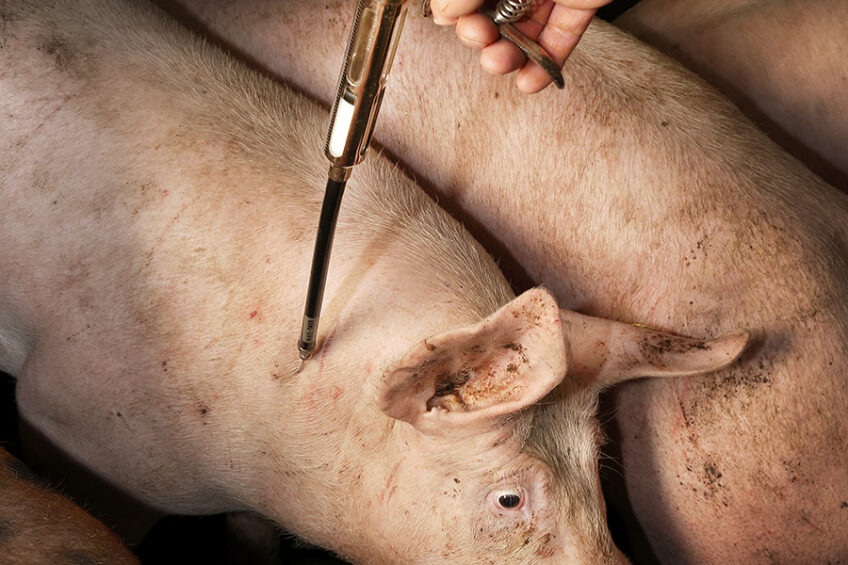Understanding the pathways of antibiotic resistance genes

Swine farming is a fundamental source of environmental antibiotic resistance genes (ARGs) worldwide. Understanding the pathways of ARG propagation into the environment is critical to develop strategies to mitigate environmental and public health impacts of antibiotic resistance.
Infections that are resistant against antibiotics are a universal concern. They cost up to $ 100 trillion per year in health care and global mortality will reach 10 million animals by 2050.
Gut microbiota acquire and maintain ARGs
In swine farming, antibiotics are mainly used for prophylactic and growth promotion purposes. They are consistently detected in pigs’ guts at low and sub-lethal concentrations. As a result, gut microbiota acquire and maintain ARGs and enhance the abundance of resistant bacteria.
The excretion of ARGs into the soil and water is an emerging environmental, human health, and operational concern which limits the number of effective antibiotics for therapeutic purposes.
Swine waste has a greater diversity and a higher abundance of ARGs compared to other livestock waste
Antibiotic resistance mechanisms
Major resistance mechanisms include antibiotic deactivation, extrusion through efflux pumps, and protection of targets by specific proteins. The ARGs confer resistance to several major classes of antibiotics including tetracyclines, sulfonamides, β-lactams, macrolide-lincosamidstreptogramin B, aminoglycosides, fluoroquinolone, quinolone, florfenicol, chloramphenicol, and amphenicol.
Diversity and abundance of ARGs
Swine waste has a greater diversity and a higher abundance of ARGs compared to other livestock waste. This is due to a more intensive use of antibiotics for therapeutic, prophylactic, and metaphylactic purposes. Pigs also receive higher dosages early in life.
In addition, the abundance of ARGs in pig waste varies among countries, with China being at the top of the list as the largest producer and consumer of antibiotics. Site-specific physical and chemical conditions within countries affect the abundance of ARGs propagation and attenuation dynamics, as well.
ARGs spread from pigs to humans
Antibiotic-resistant bacteria and ARGs transferr from pigs into the soil through land application of manure and waste water irrigation. They spread to aquatic environments through waste water discharge and runoff. Intracellular and free ARGs in the soil and ground water transfer to indigenous bacteria through horizontal gene transfer. Then, antibiotic-resistant bacteria reach and colonise in humans causing acute or chronic infections.
Propagation of ARGs in a new environment depends on the survival, proliferation, maintenance, replication, and gene transfer by the original host and the probability of gene acquisition by new hosts. The growth rates of antibiotic-resistant bacteria, substrate concentrations, and the presence of toxic compounds impact the occurence of ARGs in the environment.
Oral ingestion of contaminated food, waste, residual waste from occupational exposure or contaminated environments and inhalation are the pathways by which antibiotic-resistant bacteria reach human gut environments. Factors such as high concentrations and proximity of ARG donors and recipients, temperature, physiochemical conditions, and nutrient availability increase horizontal gene transfer in the human gut and cause multidrug resistance genes occurrence.
ARGs can be removed from manure by conventional waste treatment
Standard manure treatment
ARGs can be removed from manure by conventional waste treatment. The waste is stored in lagoons and then treated through anaerobic digestion or composting and it is separated into solid and liquid streams. The solids are used to fertilise agriculture soils, and the liquid is treated in a bioreactor or is discharged directly to waterbodies without treatment.
Differences in operating temperature, abilities of potential hosts to maintain and transfer ARGs, and properties of the manure affect the abundance of certain types of ARGs. Strategies including manure stabilisation with lime before application, vegetating the soil with appropriate plants, and using land application methods such as incorporation or injection mitigate ARG propagation in the soil.
Supplementing biochar and wheat straw reduces the dissolved concentration of inhibitory residual antibiotics and heavy metals, improves the digestion process and the associated removal of ARGs. Furthermore, thermophilic composting along with additives that reduce the bioavailability of heavy metals is effective in reducing the diversity and abundance of ARGs in manure.
Controlling ARG levels at the source
Strategies including adjusting animal diets to minimise disease occurrence, decreasing human-to-animal contact, optimising waste collection methods, increasing the frequency of waste collection, and creating containment areas for sick animals reduce the spread of disease, and the ARG abundance and diversity at the source.
In addition, halting antibiotic use, preventing conjugation of plasmids carrying ARGs, and promoting resistance plasmid loss decrease the ARG abundance. Using antibiotic alternatives such as antimicrobial peptides, probiotics, and prebiotics is a promising method for selective microbial control. Regulations and policy for manure storage and disposal practices should be established to reduce ARGs discharge into receiving environments. In addition, disinfection processes such as chlorination and UV disinfection remove ARGs from drinking water and municipal wastewater.
Further research
Further research is needed to develop validated models to quantitatively assess the impact of ARG dissemination from pigs on human health.
 Beheer
Beheer








 WP Admin
WP Admin  Bewerk bericht
Bewerk bericht